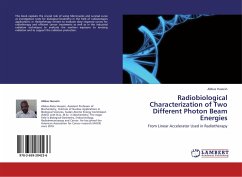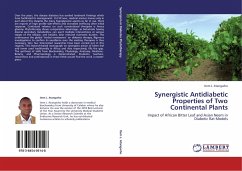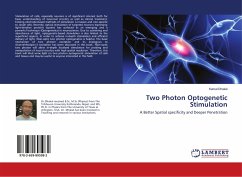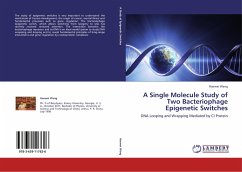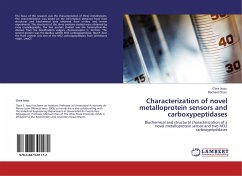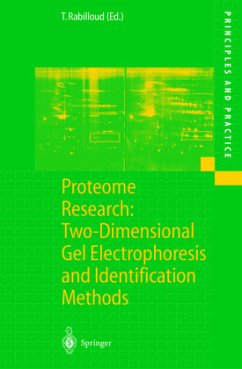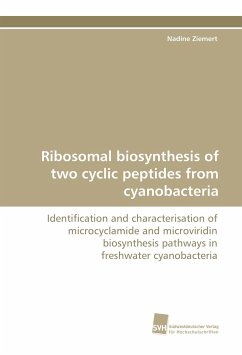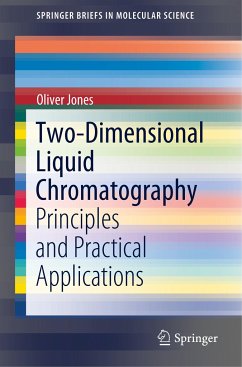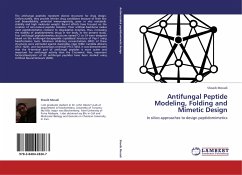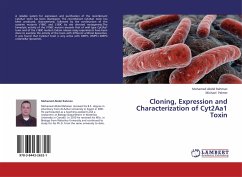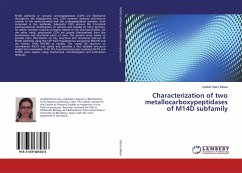
Characterization of two metallocarboxypeptidases of M14D subfamily
Versandkostenfrei!
Versandfertig in 6-10 Tagen
47,99 €
inkl. MwSt.

PAYBACK Punkte
24 °P sammeln!
M14D subfamily or cytosolic carboxypeptidases (CCPs) are distributed throughout the phylogenetic tree. CCPs common domains architecture consists in the amino-terminal and the carboxypeptidase domains, both conserved in the subfamily. Eukaryotic CCPs process the C-terminal posttranslational modifications of tubulins and possibly of other proteins. Its cellular function could be primarily related to cilia and basal bodies. On the other hand, prokaryotic CCPs are poorly characterized from the biochemical and functional point of view. The present work aimed to provide more information on key struc...
M14D subfamily or cytosolic carboxypeptidases (CCPs) are distributed throughout the phylogenetic tree. CCPs common domains architecture consists in the amino-terminal and the carboxypeptidase domains, both conserved in the subfamily. Eukaryotic CCPs process the C-terminal posttranslational modifications of tubulins and possibly of other proteins. Its cellular function could be primarily related to cilia and basal bodies. On the other hand, prokaryotic CCPs are poorly characterized from the biochemical and functional point of view. The present work aimed to provide more information on key structural and functional features of M14D subfamily using the CCP from Pseudomonas aeruginosa (PaCCP) and the human CCP6 (hCCP6) as models. The crystal 3D structure of recombinant PaCCP was solved and provides a first detailed structural insight into mammalian CCPs. The functional processes involving PaCCP and hCCP6 were explore using biochemical, microbiological and proteomics methods.



